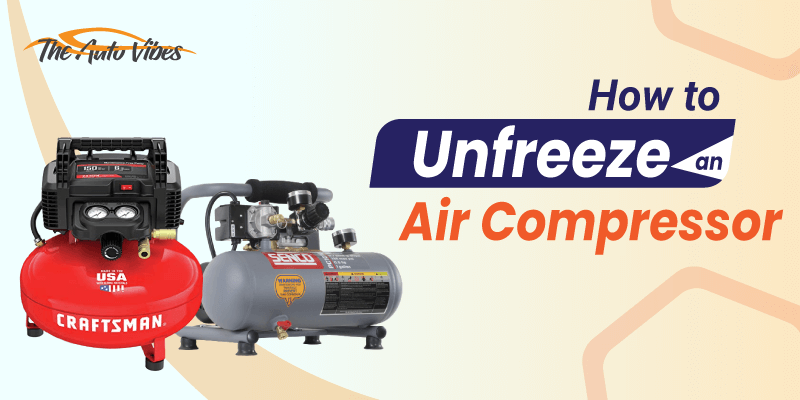When the temperature is below zero in winter, there is a possibility that the compressed air system will freeze and cause various problems. Damaged air equipment, increased electricity, and condensate that freezes are just a few of these problems.
But there are also some components that do well at -20 degrees, although checking all parts and systems of the air compressor is a very sensitive task.
It’s also a hassle to find out which parts can freeze in sub-zero temperatures unless you’re an expert. However, let’s put all that tension aside and discuss how to unfreeze an air compressor in the winter.
How To Unfreeze an Air Compressor
If you know unfreezing an air compressor in winter, you won’t have much trouble getting it back to normal. To fix your frozen compressor, follow the instructions:
Step 1: Inspect Every Part of Your Air Compressor
The first step is to diagnose the entire air compressor and determine which components are frozen. You may find frozen condensate in pipes, cracks in valves caused by freezing, or cracked expansion fluid in your air equipment and hoses. Cracks or splits in the parts may require replacement if you detect any permanent damage.
Step 2: Gradually Increase the Ambient Temperature
Mechanics usually slowly increase the temperature around frozen parts of the mechanism or piping system to unfreeze them. Your air compressor can gradually warm up around its internal areas by gently increasing the temperature.
For this, you need to shut off the outside air source first and add a heat source to the indoor area so that the ambient temperature rises above 7 degrees Celsius. Then add a heat source to the oil storage area as well. It heats the oil to a temperature of about 20 degrees Celsius. Reset the alarm on the control panel once the compressor reaches a temperature above about 4-7°C.
Step 3: Use the Right Kind of Lubricant
When the temperature drops, lubricants start to thicken if they are not the right type. Therefore, using the right oil in the air compressor during winter is important. Keep in mind high lubricant levels result in higher power consumption.
Step 4: Fix the Frozen Compressor Pipe
Sometimes, an air compressor’s pipe can freeze and become blocked, or the compressor’s bulb can freeze closed or open. It may be possible to fix some of these by increasing the temperature, but replacement is the only option for those that are permanently damaged.
Step 5: Inspections on a Regular Basis
Regular maintenance extends the life of any machinery. During the winter, it’s essential to maintain oil, lubricants, dryers, filters, and condensate in your air compressor. Make sure the oil and lubricant in your air compressor are always full.
Removing water from compressed air, dryers, and filters prevents it from condensing at sub-zero temperatures. For optimal efficiency, keep an eye on your dryer and regularly clean or replace your filters.
Drain your compressor system’s condensate regularly, either manually or automatically, because having the compressor and pipework system connected will eliminate the possibility of condensate accumulating between them.
Conclusion
Weather is always unpredictable. It becomes an oppression during winter when the temperature suddenly drops. It is, therefore, possible for machinery, such as air compressors, to freeze.
So, it is quite a relief if you know how to fix it.


